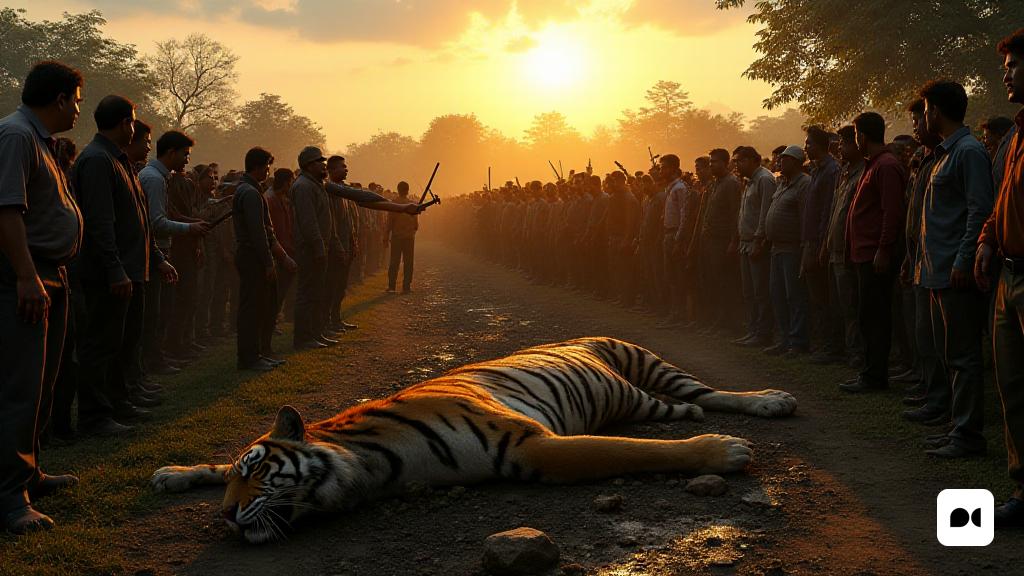A Deadly Clash in Assam
In a harrowing incident in Assam’s Golaghat district, a Royal Bengal tiger met a gruesome fate at the hands of an enraged mob. Local villagers, fearing for their safety and livestock, took drastic measures against the animal, which they believed posed an imminent threat.
The Events Unfold
Reports indicate that the situation escalated rapidly as approximately a thousand villagers converged, armed with machetes and other tools. The tiger, having previously attacked livestock, was seen as a danger that needed to be neutralized. Forest official Gunadeep Das confirmed the tiger succumbed to severe wounds inflicted by the crowd, rather than gunfire.
Official Response and Aftermath
The Assam forest department is now investigating the incident, with a formal case registered in light of the tiger’s death. The carcass was retrieved under the supervision of a magistrate, and an autopsy has been ordered to ascertain further details surrounding the tiger’s demise.
Voices of Dissent
In the wake of this incident, local lawmakers have voiced their outrage. Mrinal Saikia, a prominent figure in the Assam assembly, condemned the mob’s actions, emphasizing the need for coexistence between humans and wildlife. He shared a video depicting the aftermath, highlighting the tiger’s dismembered remains, and vowed that those responsible would face justice.
A Broader Context: Human-Wildlife Conflict
This tragic event is not an isolated case. It marks the third reported killing of a tiger in Assam this year, pointing to a troubling trend of increasing human-animal conflict. The region has witnessed a steady rise in its tiger population—from 70 individuals in 2006 to 190 in 2019—thanks to conservation efforts. Yet, as their habitat shrinks and corridors between national parks are compromised, encounters between tigers and humans are becoming more frequent.
Legal Protections and Future Implications
Under India’s Wildlife Protection Act of 1972, tigers are classified as a protected species, which strictly prohibits their hunting and the trade of their parts. Despite this legal framework, the ongoing conflict underscores the urgent need for effective measures to ensure both wildlife protection and community safety. As Assam grapples with these challenges, the call for sustainable coexistence has never been more critical.
Looking Ahead: A Call for Balance
The incident serves as a stark reminder of the delicate balance between human interests and wildlife conservation. As communities and conservationists seek solutions, fostering understanding and developing strategies to mitigate conflict will be essential in preventing future tragedies. Only through collaboration can a harmonious relationship with nature be achieved, ensuring both human safety and the protection of magnificent species like the Royal Bengal tiger.

